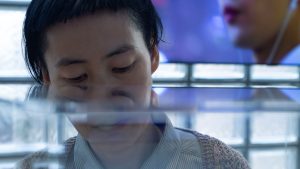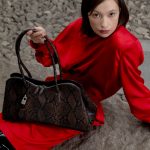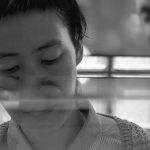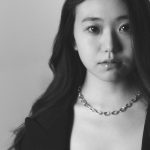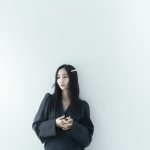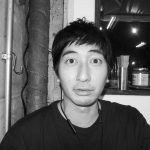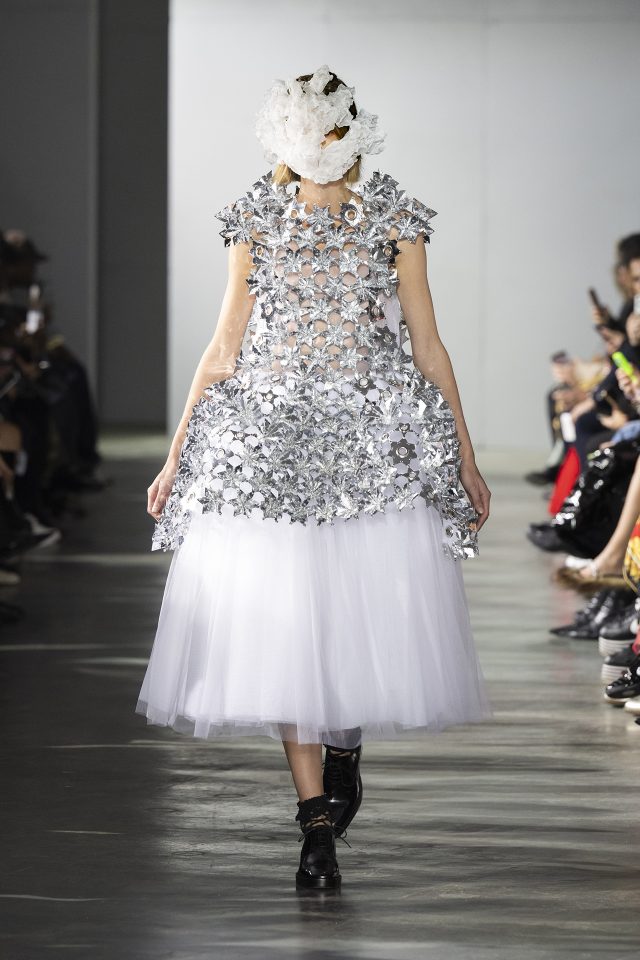UNITED ARROWS (ユナイテッドアローズ) クリエイティブディレクター、栗野宏文インタビュー
Hirofumi Kurino
日本のファッション界最重要人物のひとり、栗野宏文氏。日本を代表するファッション小売業 UNITED ARROWS のクリエイティブディレクション担当上級顧問であり、日本のファッション業界をドメスティックとインターナショナルな視点から俯瞰的に語ることができる数少ないファッション・ジャーナリストでもある。業界歴35年というキャリアもさることながら、政治経済・音楽・映画・アートから国内外情勢を投影した時代の潮流(ソーシャルストリーム)を捉えるマーケターとしても、国内外で高く評価されている。栗野氏にとって、ファッション業界の過去・現在・未来とは?
UNITED ARROWS (ユナイテッドアローズ) クリエイティブディレクター、栗野宏文インタビュー
Portraits
*You’ll find the English text after the Japanese.
日本のファッション界最重要人物のひとり、栗野宏文氏。日本を代表するファッション小売業 UNITED ARROWS のクリエイティブディレクション担当上級顧問であり、日本のファッション業界をドメスティックとインターナショナルな視点から俯瞰的に語ることができる数少ないファッション・ジャーナリストでもある。業界歴35年というキャリアもさることながら、政治経済・音楽・映画・アートから国内外情勢を投影した時代の潮流 (ソーシャルストリーム) を捉えるマーケターとしても、国内外で高く評価されている。栗野氏にとって、ファッション業界の過去・現在・未来とは?
—まず現在のお仕事内容について教えてください。
肩書き上はいわゆる上級顧問で、クリエイティブ・ディレクションを担当しています。㈱ UA にはさまざまな事業部がありまして、UNITED ARROWS を筆頭に green label relaxing (グリーンレーベル リラクシング) や Another Edition (アナザーエディション) などたくさんあります。そのおおもとのクリエイティブ・ディレクションを発信するのが私の仕事です。春夏シーズン、秋冬シーズン年に2回発信して、それに従って各事業部のディレクターが、担当事業部なりの解釈をし、カスタマイズして各々の事業部内に発信していきます。したがって、私にとって一番大きい仕事は UNITED ARROWS 全体に向けたクリエイティブ・ディレクションの発信になりますね。あと、UNITED ARROWS 事業 には District UNITED ARROWS (ディストリクト ユナイテッドアローズ) というお店がありまして、そこのディレクションと買い付けは私が直接やっています。

District UNITED ARROWS
—現在、海外にはどれくらいの頻度で行かれていますか?
最低年に6回です。メンズのコレクションで2回、ウィメンズのコレクションで2回、そして Première Vision (プルミエール・ビジョン) という生地展に2回です。
—ニューヨーク生まれと聞いたのですが、いつごろまで海外にいらしたのですか?
ニューヨーク自体は1年くらいなので、まったく記憶には残っていないです。たまたまそこで生まれただけですね。4歳から6歳まではオーストリアのウィーンに住んでいて、それ以降はずっと日本在住です。
—ファッションに興味を持ちはじめたのはいつごろからでしょうか?
たどるのはむずかしいですけど、おそらく小学生くらいのときですね。母親が映画好きだったので、よく映画を観につれて行ってもらっていました。映画って、演じるキャラクターと着ている服に深い関係性があったりしますよね。例えば、極端な話で正義の味方が白馬に乗って白い服を着ていて、悪者が黒馬に乗って黒い服を着ていたり。それを見ていておもしろいなと。当然その白い服を着て白馬に乗った正義の味方の方にシンパシーを感じるわけです。しかしやがてそれはそれで単純すぎて格好悪いなとおもうようになりまして、黒い服を着ている悪役や、まだらの馬に乗っている脇役の方に気持ちがいくわけです。それは自分にとって服と人との関係性みたいなことで、ファッションの目覚めだったのだとおもいます。
—音楽はどのようなジャンルをお聴きになられますか?
一番多いのはロックとソウルです。最近は50年代のものも聴きますけど、主に60年代から80年代までですかね。一番好きだったのは David Bowie (デヴィッド・ボウイ) です。その前はやはり The Beatles (ザ・ビートルズ) や The Rolling Stones (ザ・ローリング・ストーンズ) などをよく聴いていました。
—栗野さんにとって、ファッションとは?
簡単に言えるようなものではないですけど、一言でいうなら「自己表現」。自分が一体なにを考えているのかというのを外に伝えるのに適したツールだとおもいます。自分にとってはですけど。もちろん、世の中では別の解釈もあるとおもいます。

ユナイテッドアローズ 原宿本店 ウィメンズ館
—1989年の UNITED ARROWS 設立メンバーのひとりということですが、設立当時から意識していたことはありますか?
ファッション小売業は、ひとりよがりになりがちなのです。自分のやっていることがすごくかっこ良いとおもったり、かっこ良い暮らしをしたいとおもってファッション業界に入る人が多いとおもいます。しかしそれは真逆で、私はよく「街の商店街」という言葉を使うのですが、どんなに企業が大きくなっても、「街の商店街」にある肉屋さんやパン屋さんの“オヤジ”みたいでいたいなと、当時からおもっています。
—クリエイティブ・ディレクションを発信するにあたって、流行の予測をしたり、先のことを考えたりしなければいけないとおもうのですが、情報収集や流行の予測はどのようにされているのでしょうか?
一日24時間、なにからでもヒントはもらえます。やはり一番多いのは新聞ですね。一日に3紙、一般紙と専門紙と経済紙を読みます。隅から隅まで読むわけではないですけれど。㈱UAでは、ソーシャルストリーム・イントゥ・ディレクションという、社会潮流からのディレクションをしています。例えば、「来年“赤”が流行りますよ」とか、「来年服のシルエットが丸くなりますよ」という前に、なぜ赤だとおもうのか、なぜシルエットが丸くなるのか、絶対に理由があります。それを探しにいく。僕らの服を買ってくれるお客様にとっては、なにが流行るとか、どのデザイナーがいま一番新しいかというよりも、自分の子どもを幼稚園に送っていかなければいけないとか、給料が上がるのかどうかなどといったことの方が絶対に気になるとおもうんです。だからいまお客様・生活者が気にしていることを、新聞やニュース、あるいは美術館や雑誌など、あらゆるところから情報を収集して、ひとつのいまの消費者像というのを自分の中に作っていきます。一昨年だったら、その人たちは震災におののいていた人たちだっただろうし、最近ではアルジェリアで日本人人質が亡くなってしまった事件に心を痛めている人だろうと。その人たちがどういう服だったらお金を出して買いたいとおもうのか、それを探るというのが僕の作っていくクリエイティブ・ディレクションの骨組みです。去年の12月に総選挙があり、参議院選挙が今年7月にありますけど、現在は保守政治が強くなっています。ファッションというのは、リベラルな政治のときには保守化し、コンサバティブな政治のときにはアヴァンギャルド化したクリエイションに向かうんです。私はいままで35年間、そういう風に分析してきましたし、わりと歴史と社会状況とかを関連付いて述べる人にはそういう見方する人が多いですね。

ユナイテッドアローズ 原宿本店 メンズ館
—いま不況などが叫ばれている世の中ですが、日本のアパレル市場はこれからどういう方向に向かっていくとおもわれますか?
もし経済状況のことだけを言ったらひとつも良いことはないと思います。もっと洋服が売れなくなると思います。ただ、逆に言うと、それほど経済や好況不況という言葉に対して深く追求をしていない人や、理由を考えていない人ほど、不況で服が売れないと言うんですよ。私が洋服業界に入ってから35年くらい経ちますが、結局、景気が良かったから服が売れたとか、景気が悪くなって服が売れなかったということは、いままでありませんでした。もし景気が悪いから服が売れないのだとしたら、とっくに服なんか売れなくなっていますし、景気が良くて服が売れるのだったら、もっと服は売れるとおもいます。もちろん、一部のラグジュアリーブランドや一部のファストファッションのように、景気とすごくリンクしている存在というのもありますけど、私が扱ってきた商品や㈱UAが扱っている商品というのは、景気が良くてお金が入ったから買いにいく服でもないだろうし、景気が悪くなって自分の収入が減ったから買うのをやめる服でもない。いままで景気に大きく左右されない買い付けをしてきましたし、ショップや会社作りをしてきました。自分の中でも景気というのを言い訳にしない。このことはこれまでほぼ30年間変わっていません。
—バイイングを行うときは、なにを考えていますか?
バイイングの時点では既にモノになっているので、そのモノが良いか悪いかしかありません。例えばこの手帳が1万円だとします。自分たちのお客さんはこれを1万円で買ってくれるか、いやこれは2万円でも買ってくれるよ。あるいはこれ、5千円ぐらいではないかというふうに、モノの完成度とプライスから瞬時にジャッジして、自分たちが扱うのにふさわしいとおもうかどうかというのを決めていくのがバイヤーの仕事ですね。
—仕事柄よく海外に行かれてセレクトショップやデパートなどをご覧になるとおもうのですが、注目しているセレクトショップやデパートはありますか?
あらかたみなさんが見ているようなものは見尽しているので、ここは新しいというのはなかなかないです。好みで言えば、ニューヨークのBergdorf Goodman (バーグドルフ・グッドマン) やパリのLe Bon Marché (ル・ボン・マルシェ) といったデパートは好きです。セレクトショップだと、イタリアの田舎に良いお店がたくさんあります。小さい街にすごく良いお店がありまして、ボローニャにあるBarrow (バーロー) というお店や、フィレンツェとラヴェンナにある SPACE (スペース) というお店は、行くたびに勉強になりますね。
—Royal Academy of Fine Arts Antwerp (アントワープ王立芸術アカデミー) のファッション科の卒業審査員を1996年から2002年までなさっていたということですが、思い出に残っているような出来事はありますでしょうか?
どの年もおもしろかったのですが、強いてあげるとすれば Bernhard Willhelm (ベルンハルト・ウィルヘルム) と Kris Van Assche (クリス・ヴァン・アッシュ) です。Bernhard は、私が96年に最初に審査をしたときはまだ2年生だったのですが、ものすごい存在感を放っていて、彼は絶対大物になるだろうとみんな言っていました。実際にすばらしいコレクションを作っていました。アントワープの良いところは、卒業ショーの中で、1年生から4年生まで全員が服を発表できるところです。Bernhard の2年生から卒業までの作品を見ましたけど、その人の成長のプロセスが分かるんです。だから彼がどう成長したのか、その後どう大きくなっていったか、どこが変わっていなくてどこが変わったというのをつぶさに見ることができました。17、8年前くらいですね。
Kris は98年に卒業したのですが、卒業するときに僕に手紙をくれて、これからどうしたら良いのかと相談してきました。そのころはちょうど私が Hedi Slimane (エディ・スリマン) の Yves Saint Laurent (イヴ サンローラン) を日本に導入したときでした。当時、Hedi はアシスタントがいなくてすべてひとりでやっていて、てんてこ舞いでした。なので、優秀なアシスタントが入れば、彼にとっても、これから絶対伸びるであろうブランドに参加できるアシスタントにとっても、きっと勉強になるとおもったのです。そこで Kris と Hedi の面接をセッティングしたのです。そうしたらすぐに Hedi が Kris を気に入ってくれました。Kris にとっては卒業をしてすぐ仕事が見つかり、Hedi にとっては最初のアシスタントが見つかったわけです。それから6年間くらい、彼らは一緒に仕事をしました。だから彼らは未だに自分にとって子どもみたいな想いがあります。とくに Kris に関しては、ああいう形で育っていくのを見てやはりうれしいです。Krisは、人間的にものすごくまともな人で、とても礼儀を尽くす人です。2005年に彼自身のコレクションを立ち上げたときも、展示会場に行ったらわざわざ彼の両親を呼んでくれて、「この人が僕を Hedi に紹介してくれた方です」と言ってくれて、彼の両親とも仲良くなりました。それ以降も、彼はショーに毎回両親を呼ぶのですが、その都度私は挨拶をしています。親戚みたいなものですね。アントワープ王立芸術アカデミーは本当にレベル高いです。毎年60人入学しますが、2年生になると大体30人になる。3年生では15人くらいになって、最近でこそ10人くらいは卒業しますけど、私が7年間審査員をやった中で一番少ないときは4人しかいませんでした。15分の1に減ったということですね。直近だと、4年前の2009年に、久々に審査を依頼されたのですが、おもしろかったです。
—日本のいまと昔のファッション業界を比べると、大きな違いはありますか?
いまと昔は変わっているように見えて、実は大きく変わっていないとおもいます。強いて言えば80年代というのは、いわゆる“マンションメーカー”といわれる小さいマンションの一室でブランドを作るような人が次から次へと出てきて、中には大成功した会社もあります。単純に人の力ではなく、時代的に80年代の方がデビューしやすかったのではないかという気もしますが、いまでも高円寺のキタコレビルや原宿の Dog (ドッグ) などのように新しいことをやっている人はいるので、いまの方が明日から突然なにかをはじめるというときには良いのかも知れません。昔よりやりやすくなったのか、昔よりやりにくくなったのか、簡単には言えないです。ただ、インターネットも発達して、お友達を作りやすい時代なので、メジャーにデビューをしなくても、お友達の間である程度自分の立ち位置を作れる時代になったのだろうなと、高円寺などを見ていておもいました。
—Japan Fashion Week (以下: JFW) はこれからどうなっていくのでしょうか?
数年前に民主党政権になり、仕分けのさいに、それまであった JFW へのサポート金が減りました。そのサポートもなくなり、おそらくいまはまったく資金がありません。いまはMercedes-Benz (メルセデスベンツ) がスポンサーについたので、Mercedes-Benz Fashion Week (メルセデスベンツ・ファッションウィーク) という形になり、あとは日本貿易振興機構の JETRO (ジェトロ) や経済産業省がサポートして場所は貸しましょうとか、優秀なデザイナーは海外に売り込みましょうというような動きをしています。しかし国からのサポートがほぼ期待できない形の中で、別に Comme des Garçons (コム デ ギャルソン) や Yoji Yamamoto (ヨウジ ヤマモト)、ISSEY MIYAKE (イッセイ ミヤケ) が出るわけでもなく、UNDERCOVER (アンダーカバー) もでない。そこのネガティブな要素だけ見ればやる意味はないですよね。ところが、東京のファッションはそれでもおもしろいじゃないですか。街もおもしろい。私は3、4年前から JFW のコミッティの委員を務めているのですが、せっかくやるのだったらビックネームに頼らず、若い人たちを中心に、おもしろくイキの良いことをやろうと言い続けていました。JFW はここ2年くらい、とくに前回くらいから良くなってきていて、次の3月は期待できるとおもいます。今度 GANRYU (ガンリュウ) も出ますしね。だから、例えばアメリカ、フランス、イギリスやイタリアにいないタイプのデザイナーを探す場合、やはり東京のストリートがおもしろい。東京の息吹を感じさせてくれるような VERSUS TOKYO (バーサス・トウキョウ) に参加する C.E (シー イー) や GANRYU。そういうものが JFW の中で紹介されていくのであれば、海外からも人がくる価値がある。そして日本はインテリアデザインもすごく良いので、インテリアのフェスティバルと組み、アニメーションやマンガなど、日本の一部インディペンデントなところともコラボレートして、総合的なクリエイティビティをキーワードにしたカルチャー発信をしていけば生き残れるとおもいます。ただパリ、ミラノ、ロンドンのような大きなファッション・ウィークを期待すること自体が間違いだし、大きいか小さいかではなくて、いかにおもしろいかというのをもっと押し出すべきなんです。

Photo by Hidemasa Miyake | © The Fashion Post
—よく海外に輸出される日本のファッションがカワイイ系だったり、109系ギャルモードだったりしますが、そのカルチャーについてはどのように感じていますか?
おもしろいとおもいます。ただ、なぜそういうものが生まれてきたのかとか、それはワールドマーケットの中でどういう意味をもっているのかなどをきちんと定義してあげたり、解説してあげたりする人がいないと、海外に盗まれて終わってしまいますよね。日本のファッションの最大の特徴は、階級がないということと、性がないということ。だから、別に今日スーツを着ていても、明日はヒップホップでも良いし、週末は Comme des Garçons や Vivienne Westwood (ヴィヴィアン・ウエストウッド) を着ていても良い。日曜日はサーファーでも大丈夫。これは欧米では考えられないことです。欧米では、スーツを着るということは、スーツを着るような仕事をしているということを意味します。ファッションはメッセージ。そしてパーソナルなメッセージではなく、自分と社会を結ぶアイコンとしての要素が強い。もうひとつは、自分が服を着ることによって、例えば女の人を口説きたいとか、男の人を口説きたいとか、服によってモテたいというのが欧米では大前提なんです。しかし日本だと服は趣味の部類に入ってしまう。まったくモテなくて構わない。非モテ系の服がこれだけもてはやされている国は日本だけだとおもいます。それでは109のギャル系はどうなのか。あれはコスプレですよね。一応見た目は肌を露出していたり、スカートがすごく短かったりするけれど、あれを見て欲望を覚える人はあまりいないのでは?秋葉原のコスプレとあまり変わらないとおもいます。だから秋葉系の子たちと、ガングロ系の子たちは一時、すごく近い立ち位置にいました。あのような服装は一種のコスプレなんだろうなと私はとらえています。だからファションも知的なゲームとして遊べるのであれば、日本のユースカルチャーやユースファッションも、他の国にもって行ってもおもしろいはずです。
—最近、気になる東京のお店はありますか?
PARCO (パルコ) は、できたときから知っているので、もう40年くらい前でしょうか。久しぶりに去年の12月に行ったら、すごくおもしろくてうれしくなりました。テナントもガラっと変わり、本屋さんもますますパワフルになっていました。ちょうど ANREALAGE (アンリアレイジ) の展覧会をやっていたり、Village Vanguard (ヴィレッジ・ヴァンガード) のお店があったり、古い雑誌が売っていたり、PARCO 全体が下北沢化しています。下北沢がそのまま PARCO になったという感じはすごくウェルカムです。
—海外で評価が高い日本のブランドはどこでしょうか?
いまは、まず kolor (カラー) と sacai (サカイ) ですね。kolor はメンズ、sacai はメンズ・ウェメンズ共にすごい評価が高いですね。あと最近、東南アジアでは TOGA (トーガ) の勢いがすごいです。
—海外の気になるブランドにはどのようなものがありますか?
一昨年くらいから UNITED ARROWS では UMIT BENAN (ウミット ベナン) というブランドをプッシュしていまして、実際にすごく売れてきました。その次に会社をあげて注目しているのが、1205 (トゥエルブ オー ファイブ) という英国のブランドです。個人的には AI (エー アイ) という、Andrea Incontri (アンドレア・インコントリ) というデザイナーのブランドがこれからくるとおもっています。それから小物でいうと、Leitmotiv (ライトモチーフ) というイタリアのブランドがおもしろくて、実際に売れてもいます。また、オーストリアの気になるブランドも2つありまして、1つ目は rosa mosa (ロサ モサ) というユニークなシューズブランド。インディペンデントな存在ですが、他のメゾンやデザイナーに影響を与えています。2つ目は Florian (フローリアン) というアクセサリーブランドで、パリの colette (コレット) やロンドンの Dover Street Market (ドーバーストリートマーケット) でも人気です。
—District UNITED ARROWS で今年の春夏一押しのブランドはなんでしょうか?
日本でいうとやはり kolor です。マイナーなブランドですと、 & wears (アンド ウェアーズ) というところが良いモノを作っていますね。海外だとやはり 1205 と Christopher Raeburn (クリストファー レイバーン) です。今日私が履いている、HESCHUNG (エシュン) というシューズブランドは、去年の秋冬にすごく売れたので、当分しっかりとやっていきたいブランドですね。
—これから海外で勝負したいと考えている日本のブランドにアドバイスをお願いします。
なぜ海外に行きたいのかというのをきちんと考えてから出た方が良いです。海外進出すること自体が目的にならないことが大切。ショーをやるにしても最低1,000万円以上かかりますから、それでも持って行きたいのか、勝算はあるのか?考えた方が良いでしょう。皆さんが思っているようなメンズマーケットは海外には存在しないので、余程コレはスゴイというモノを作って行かないかぎり、買ってくれないとおもいます。日本のメンズマーケットはものすごく大きく、世界一です。さきほど言ったように、日本のファッションには階級がなく、性的誘惑も無い為に、素直に服をたのしめる男の子が山ほどいます。だから日本のメンズ・ファッションマーケットはおもしろい。昔ほどスーツを着なくなったとはいえ、本来ならば、男の人はスーツを着て会社に行きます。スカートは履かないし、ワンピースも着ない。男の人は着れる服の範囲がすごく狭いです。逆に、女の人はあらゆるオケージョンで服を着替えられるし、服を着ることにまだまだ意味があります。そう考えると、日本でここまでメンズファッションが盛んになったこと自体、奇跡のような話ですね。それは、1976年創刊の『Popeye (ポパイ) 』や『Brutus (ブルータス)』、『Hot-Dog PRESS (ホットドッグ・プレス)』『Checkmate (チェックメイト)』、そしてもっと昔からあった『MEN’S CLUB (メンズクラブ)』などの影響がすごく大きいとおもいます。もっと後に出てきた『Smart (スマート)』や『HUgE (ヒュージ) 』などの影響もあります。1970年代に『Popeye』を見た外国人が、「これはゲイマガジンか?」と聞いてきたんです。女の人の裸が出てないじゃないですか。例えば世界の一流と言われているメンズマガジンのひとつ、『GQ (ジーキュー) 』のイギリス版、アメリカ版、フランス版、どれを見ても女の人の裸は絶対出ていますよね。一応日本の『GQ』にも女の人は出ていますが、大した量ではない。日本は、洋服の話できちんと一冊の本を作れてしまう国なのです。読者もそれでまったく平気です。そのような国は他にはないですよ。そういうことをいろいろと分かった上で、「海外進出したいのかい?」ということなんです。Comme des Garçons (コムデギャルソン) や JUNYA WATANABE (ジュンヤ ワタナベ)、UNDERCOVER (アンダーカバー) や kolor (カラー) の成功を見ながら、自分も向こうに行ったらああいうふうに成功できるんだと勘違いしてしまっている人が多いのではないでしょうか。ニューヨークでも男性はみんな普通のコンサバな格好をしていますからね。アメリカ人男性には、ゲイだと誤解されたくないという気持ちがあるんです。人間の権利としてゲイは認められていますし、ゲイ同士の結婚も、もちろん認められています。しかし、自分がゲイだと誤解されたくないという人の方が圧倒的に多い。例えば東京で私たちがしているような格好のままニューヨークを歩いたら、75%はゲイだと思われてしまうのではないでしょうか。日本国内にいたらまったく平気ですよね。誤解しようがないので。だけど、そういう違いはすごく大きいです。
—栗野さんの今後のご予定をお聞きしたいです。
いま、次のジェネレーションが育ってきているので、彼らをしっかりと育てたいです。30代のバイヤーや、20代30代のプレスを含め、次世代の育成が私の目標ですね。自分が元気なうちに伝えられるものは伝えておかないと。肉体はどんどん衰えていきますから。
—最後に、東京のおすすめスポットを3つ教えてください。
1. 下北沢のウィレッジヴァンガード
住所: 東京都世田谷区北沢2-10-15マルシェ下北沢
2. 新宿ルミネ1, 2
住所: 新宿区西新宿1-1-5, 新宿区新宿3-38-2
3. 新丸ビルの7階
住所: 東京都千代田区丸の内1-5-1
新丸ビルは飲食店がすごく充実していて、夕方には富士山が見える。夜は東京駅がきれいに見えるので最高です。私がこの業界に入って35年ほど経ちますが、あれほどよくできている商業施設は世界でも例を見ないとおもいます。
<プロフィール>
栗野宏文 (くりの ひろふみ)/株式会社ユナイテッドアローズ/クリエイティブディレクション担当 上級顧問。1953年生まれ。主に東京・世田谷で育つ。中学・高校時代は音楽やイラストレーションに熱中。1977年からファッション業界に身をおく。株式会社ユナイテッドアローズでは、長年にわたりバイヤーやブランドディレクターを担うと同時に、社会潮流を読みディレクションを発信する全社のクリエイティブディレクション担当上級顧問を務める。政治経済・音楽・映画・アートから国内外情勢を投影した時代の潮流(ソーシャルストリーム)を捉えるマーケターとして、またそこからファッションを読むファッションジャーナリストとして数々の連載寄稿・取材や講演を行なう。国内外におけるファッション文化貢献活動にも参画。Royal Academy of Fine Arts Antwerp (アントワープ王立芸術アカデミー) では度々卒業ショーの審査員も務める。2004年には、英王立芸術大学院「Royal College of Art」からHonorary Fellowship(名誉研究員)を授与。現在日本ファッション・ウィーク推進機構 コレクション事業委員会 委員として東京コレクションの開催運営に関するアドバイザーや、国際的な服地見本市のプルミエール・ヴィジョン(PV)が2009年9月展から新設した、出展社の最新生地を対にした「PVアワード」の初代審査委員メンバーに就く。

Photo by Hidemasa Miyake | © The Fashion Post
Hirofumi Kurino is one the most influential figures in the Japanese fashion scene today. He is Senior Advisor for the creative direction of Japan’s representative retail shop, UNITED ARROWS LTD. (UA LTD.). He is also one of a handful of fashion journalists capable of talking about the Japanese industry from both a domestic and an international perspective. Kurino has spent 35 years in the fashion industry. He receives high acclaim both at home and abroad for his ability to grasp the social stream of the era via domestic and international affairs, from aspects such as politics, economics, music, movies, and art. We wondered, what are Kurino’s thoughts on the past, present, and future of the fashion industry?
—Please tell us about your current job.
Title-wise, I’m what they call a Senior Advisor and I’m in charge of creative direction. UA LTD. has a number of departments. UNITED ARROWS is at the top of the list. We also have green label relaxing, Another Edition, and many more. Transmitting the fundamental creative direction for all such departments is what my job consists of. I do this twice a year for the spring-summer season and the autumn-winter season. The directors of each department interpret what I give them in their respective ways and customize it to transmit within their own departments. Hence, I consider my biggest job to be the transmitter of creative direction throughout the entire UA LTD. In addition, the UNITED ARROWS enterprise has shops which we call “districts”. I directly deal with the direction of and buying for these shops.
—How often do you travel overseas?
At least six times a year. Twice for the men’s collection, twice for the women’s collection, and twice to a fabrics show called Première Vision.
—I heard you were born in New York. How long have you lived abroad?
I only lived in New York for one year, so I don’t remember it at all. I just happened to be born there. I lived in Vienna, Austria, between the ages of four to six, but since then, I’ve always lived in Japan.
—When did you first get interested in fashion?
It’s difficult to say, but probably in elementary school. My mother loved movies and she would quite often take me to the theater. In movies, there are distinct connections between the roles of the characters and their clothing. An extreme example would be the good guy in white on a white horse and the bad guy in black on a black horse. I found that very interesting. The audience naturally feels sympathy towards the hero in white on the white horse. But eventually, we begin thinking that supporting the hero is too obvious and uncool, so we stray towards the bad guy in black or the supporting character on the dappled horse. To me, this represented the connection between people and clothes. I imagine this is what initially caught my interest in fashion.
—What sort of music do you like listening to?
Mostly rock and soul. I’ve recently taken an interest in 50s music, but mainly, I listen to tracks from the 60s to the 80s. My favorite is David Bowie. Before, I naturally listened to a lot of the Beatles and the Rolling Stones.
—What is fashion to you, Kurino-san?
Fashion is not easy to explain, but if I were to put it into one phrase, I would say “self expression”. I think it’s an appropriate tool which lets other people understand what you are thinking about. That’s what it is to me, that is. There are various interpretations throughout the world.
—You are one of the founding members of UA LTD. (1989). Is there anything you have been particularly conscious of since its foundation?
Fashion retail tends to become egocentric. Many people think doing fashion is really cool or they enter the fashion industry with the aim of leading a trendy sort of life. However, I think it’s the complete opposite. I often use the term “local shopping street”. Irregardless of how big our company becomes, I’ve always wanted to be like some old man from the butcher’s or the bakery on the local shopping street.
—I see that it’s necessary to think ahead and predict future trends in order to determine creative direction, but how do you gather the information to do this?
I receive hints from just about everything, 24 hours a day. The newspaper is the most useful information source. I read three a day: a general paper, a specialized paper, and an economics paper. Not that I read them from cover to cover. At UA LTD., my directional work is based on a method we call “social stream into direction”. For example, before we can announce that “next year’s color is red” or “the silhouettes of next year’s releases will be rounder”, there must be a reason as to why it will be red or why they will be rounder. My job is to determine that reason. I believe our customers are more interested in thinking about taking their children to kindergarten or whether they will receive a pay raise rather than the next trend or upcoming designer. I research what these customers and all those people leading ordinary lives are actually interested in by reading papers, watching the news, or in some cases, looking at magazines and going to museums. This creates a single consumer model in my head. Two years ago, that image would have been of people frightened by the earthquake disaster. More recently, it would probably be of people hurt by the death of the Japanese captive in Algeria. Determining what type of clothes people in their current mindsets wear forms the framework of my creative direction. We had a general election last December and the Upper House election will be held in July. Politics is currently becoming more conservative. Fashion tends to be more conservative during liberal politics and more avant-garde during conservative politics. Based on the past 35 years, this is how I’ve analyzed it. Many who connect history with social affairs share the same idea.
—How do you think the Japanese apparel industry will develop in this era of global depression?
If you focus solely on the economic situation, not much good can be said. I think clothes will stop selling as much. On the other hand, those who don’t take much notice of flourishing or slumping economic situations and who investigate the reasons why they’re occurring tend to blame the depression for the downturn of sales. I’ve been in the clothing industry for 35 years, but at the end of the day, there wasn’t a time when clothes sold just because the economy was good or didn’t sell because it was bad. If clothes weren’t selling due to an economic depression, they wouldn’t sell in the first place. If they sold because of a thriving economy, they should sell more. Of course, there are certain luxury brands and a portion of fast brands that are linked directly to the economic situation. However, the type of product I’ve dealt with up until now (and those that UA LTD. deal with) aren’t the type of clothes that people go to buy because the economy is good. They won’t stop buying them because they received a salary cut due to a bad economy either. I’ve made sure I purchase products that won’t be affected by the economy. I’ve created shops and companies under the same concept. I never use the economic situation as an excuse to myself. This is an idea I’ve stuck to for the past 30 years.
—What do you think about when you’re buying?
At the point of purchase, the product is already an object. The only thing I can think of is whether or not it’s good or bad. For example, let’s say this day planner is 10,000 yen. Would our customers buy this product for 10,000 yen? Maybe they’d be willing to pay 20,000, or on the other hand, maybe only 5,000. It’s the job of a buyer to make these instant judgments from the quality and pricing of the products in order to determine if they are suitable for our shelves.
—You have the opportunity to see many select shops and department stores abroad in your line of business. Are there any in particular that you pay close attention to?
I’ve seen practically everything that everyone else has seen, so there isn’t much I can share that’s new. If you are asking about my preferences, I particularly like the department stores Bergdorf Goodman in New York and Le Bon Marché in Paris. As for select stores, there are a number of good shops in the Italian countryside. The smaller places have many excellent shops. I always learn something new when I visit a shop called Barrow in Bologna and SPACE in Florence and Ravenna.
—You were appointed as one of the judges for the Royal Academy of Fine Arts Antwerp Fashion Course graduation show from 1996 to 2002. Can you tell us about any particularly memorable moments?
Every year was a fascinating experience, but I must say that Bernhard Willhelm and Kris Van Assche stood out in particular. Bernhard was only in his second year when I judged his work back in 1996, but he already had a strong presence and everyone agreed he would definitely become a big-shot. His collection was wonderful. The good thing about Antwerp is that all students, from the first to the fourth years, are given the opportunity to present their clothes in the graduation show. I saw Bernhard’s work from his second year up until his graduation and could really see his development process. I had the chance to observe in detail how he grew, how he became somebody else afterwards, what he hadn’t changed and what he had changed. This was 17 to 18 years ago. Kris graduated in 1998, but at his graduation, he handed me a letter asking for my advice about what he should do after university. At the time, I had just introduced Hedi Slimane’s Yves Saint Laurent to Japan. Back in those days, Hedi didn’t have an assistant and had to manage everything himself. It was hectic. If I were to introduce him to a capable assistant, I felt it would not only help him but also the assistant. The assistant could take part in the development of a brand that had a promising future. I set up an interview with Kris and Hedi. Hedi instantly took a liking to Kris. Kris managed to find a job straight after his graduation and Hedi found his first assistant. They worked together for about six years after that. I still see them as my children, in a way, and especially in Kris’ case. I’m extremely pleased to see how he developed. Kris is a very well-mannered and respectable individual. In 2005, when I attended Kris’s first collection, he went to the trouble of calling over his parents and introducing me as “the person who introduced him to Hedi.” I became very close to his parents. He always invites them to his collections. Ever since that first time, we exchange greetings. They’re like my relatives now. The level of the Royal Academy of Fine Arts Antwerp is very high. Even though 60 students enroll every year, only 30 are left by the second year. By the third year, there may be only 15 students left. They have had 10 or so graduates in these recent years, but over the seven years I judged, one year only had 4 graduates. That means the number of graduates was only a fifteenth of the original number of students. I was asked to judge four years ago in 2009 and it was truly an entertaining experience.
—Do you think Japan’s current fashion industry has changed in any way over the years?
It may seem as though there’s a big difference, but I don’t think it has changed very much. However, in the 80s, many designers were referred to as “apartment makers”. They used to rent small apartment rooms in order to create brands. Some actually developed into big selling companies. I don’t think their individual abilities were necessarily high. Rather, the 80s were an easier era to make a debut in. That said, many designers are attempting new tactics. You can see this in the Kitakore Building in Kouenji and Dog in Harajuku. I think now may be an easier time to spontaneously start something new. It’s difficult to say whether or not it’s become easier or more difficult compared to the past. Nonetheless, the development of the Internet has made it so much easier to make friends. Regardless of whether or not you succeed in making a major debut, this is an age in which you can establish your own distinct position among your friends. This is the impression I get from Kouenji.
—Can you tell us your thoughts on the future of Japan Fashion Week (JFW)?
When politics changed in Japan a few years ago, support funds for JFW decreased during the screening process of budget requests. Having lost their main support, JFW most likely has no funds at all. Mercedes-Benz is its current sponsor and so it has become Mercedez-Benz Fashion Week. The Japan External Trade Organization, JETRO, and the Ministry of Economy, Trade and Industry have shown their support by providing possible venue locations. There is also a movement to sell talented designers abroad. However, if you focus on the downsides, such as the scarce governmental support and the absence of famous brands such as Comme des Garçons, Yoji Yamamoto, ISSEY MIYAKE, and UNDERCOVER, I guess there’s not much point in continuing. Tokyo fashion is still very interesting though. The city is fun too. I’ve been a member of the JFW committee for three or four years now. I’ve always suggested we focus on young designers and do something fresh and fun rather than rely on big names. JFW has improved over the past couple of years, and especially so last year. I expect the next event in March will be something definitely worth seeing. GANRYU will be participating in the event too. The streets of Tokyo are definitely a fun place to look when searching for designers who aren’t present in America, France, England, or Italy. If VERSUS TOKYO brands like C.E and GANRYU, who represent the air of Tokyo, are introduced at JFW, the event will be worth coming to visit for people abroad. Japan’s interior design is also very good. Collaborating with interior design festivals (in addition to other Japanese proficiencies such as animation, manga, and independent arts) in order to transmit our culture under the concept of total creativity will ensure the survival of JFW. It’s unrealistic to expect a fashion week of the same scale as those held in Paris, Milan or London. We shouldn’t concentrate on how large it will be, but rather, on how interesting we can make it.
—The majority of Japanese fashion exported abroad is based on the concepts of ‘kawaii’ or ‘109 girls mode’. What are your thoughts on such culture?
I think this culture is very interesting. However, if there is no one to apply a proper definition to why or explain how such designs came about and what sort of meaning they hold in the world market, the designs will just be stolen. Japanese fashion is not restricted to class or gender. That’s its greatest characteristic. In other words, one can wear a suit one day and hip hop fashion the next. You can wear Comme des Garçons or Vivienne Westwood over the weekend. Maybe you’ll even become a surfer on Sunday. This is unthinkable in America or Europe. In those sorts of countries, wearing a suit means that person has a job which requires a suit. Fashion is a message – not necessarily a personal message, but rather, an icon which connects that person to society. Another major premise of choosing clothing abroad is the desire to impress a woman or man and therefore be popular. In Japan, fashion is a hobby. We don’t care whether our choices are popular among the opposite sex. I think Japan is the only country in which such unpopular clothing gathers such attention. How about the female fashion of 109? That’s basically cosplay. Even though most of the fashion consists of extremely short skirts and exposes a lot of skin, I don’t think many people are sexually attracted to the wearers. It’s not so different from the cosplay in Akihabara. Up to a certain point, the Akihabara fashion girls and the ganguro [dark skinned] fashion girls are not very different. I interpret such clothing as a type of cosplay. If you consider fashion to be an intellectual game, I’m sure the Japanese youth culture and youth fashion will be seen as very interesting abroad.
—Are there currently any shops in Tokyo that attract your attention?
I’ve known PARCO since it was established about 40 years ago. I went last December after a really long time and was pleased to see how interestingly it has evolved. Its tenants have completely changed and the bookstore is even more effective. I would say PARCO has become very similar to Shimokitazawa. ANREALAGE was holding an exhibition when I went. Village Vanguard now have a store there. They also sell old magazines now. I’m really welcome to the idea of Shimokitazawa essentially becoming PARCO.
—Which Japanese brands are highly rated overseas?
Right now, I would say kolor and sacai. kolor’s menswear and sacai’s mens and womenswear certainly enjoy high reputations. TOGA is also spreading rapidly in south-eastern Asia.
—What sort of foreign brands are you currently interested in?
For two years now, we’ve been pushing a brand called UMIT BENAN at UNITED ARROWS and it’s actually sold very well. The next brand we are paying close attention to as a company is an English brand called 1205. Personally, I think the brand AI, created by the designer Andrea Incontri will become popular in the future. As for goods and accessories, I find the Italian brand Leitmotiv rather interesting and it’s selling quite well. There are also two Austrian brands that take my fancy. One is a unique shoe brand called rosa mosa. It’s an independent brand but has influenced many shops and designers. The second is an accessories brand called Florian. It’s popular in Paris’ colette and London’ s Dover Street Market.
—What brand does District recommend for this year’s spring-summer season?
Out of the Japanese brands, I would have to say kolor. Regarding minor brands, & wears are producing quality products. I’d choose 1205 and Christopher Raeburn out of the foreign brands. The shoe brand HESCHUNG, which I’m wearing today, sold very well in last year’s autumn -winter season and is a brand we would like to push for a while.
—Do you have any advice for Japanese brands planning to expand abroad?
They should seriously think about why they want to expand abroad before doing so. It’s important that an overseas debut alone doesn’t become their final goal. It costs ten million yen just to do a show, so it’s necessary to think about whether it will be worth that money or whether you have a real chance of succeeding. The sort of men’s market most people have in mind doesn’t exist abroad, so unless you create something truly amazing, no one will buy it. The Japanese men’s market is immense and is the largest in the world. As I said earlier, Japanese fashion disregards class and sexual enticement, so many men are able to enjoy fashion without any restraints. That’s why the Japanese men’s market is very interesting. Although suits aren’t worn as much as they used to be, men generally have to wear suits to work. And of course, they can’t usually wear skirts or dresses. The range of clothes men can wear is extremely limited. Women can drastically change what they wear depending on the occasion, so clothes have far more meaning to them. From this perspective, it’s practically a miracle that men’s fashion grew into such a big market in Japan. I think this is due to the influence of the magazines published in 1976: “Popeye”, “Brutus”, “Hot-Dog”, “Checkmate”, and in earlier times, “MEN’S CLUB”. I’m sure later magazines such as “Smart” and “HUgE” played a part as well. A foreigner who saw “Popeye” in the 70s asked me if it was a gay magazine because there weren’t pictures of nude women in it. “GQ”, one of the top men’s magazines in the world, has pictures of nude women in all English, American, and French editions without fail. Although the Japanese edition of “GQ” has pictures of women too, they’re more limited. Japan is a country capable of making magazines entirely about clothing. The readers don’t seem to mind at all. There’s no other country like that. The question is whether or not you want to expand abroad having acknowledged all of this. The success of Comme des Garçons, JUNYA WATANABE, UNDERCOVER, and kolor gives people the impression that they can succeed in the same way if they expand overseas. But even in New York, men’s fashion is conservative. Americans tend to fear being mistaken as gay. Of course, gay people have rights and gay marriage is accepted there, but the majority of men fear being mistaken as gay. For example, if we were to walk around New York in the same clothes we wear in Tokyo, I’d say 75% of us would be thought of as gay. There’s no such problem in Japan because there’s no way people will jump to that conclusion. This difference is really important.
—What are your future plans?
The next generation is currently maturing and I would like to spend time assisting their development. My goal is to cultivate the next generation of buyers in their 30s, including members of the press in their 20s and 30s. I want to teach them what I can while I’m still capable of doing so. I’m not getting any younger.
—Lastly, can you recommend us three spots in Tokyo?
1. Village Vanguard in Shimokitazawa
Address: 2-10-15 Marche Shimokitazawa, Setagaya-ku Kitazawa, Tokyo
URL: http://www.village-v.co.jp
2. Shinjuku Lumine 1, 2
Address: 1-1-5 Shinjuku-ku Nishi-Shinjuku, 3-38-2 Shinjuku-ku Shinjuku
URL: http://www.lumine.ne.jp/shinjuku
3. 7th floor of Shinmaru Building
Address: 1-5-1 Chiyoda-ku Marunouchi, Tokyo
URL: http://www.marunouchi.com/shinmaru
Shinmaru Building has a great selection of restaurants, and in the evenings, you can see Mount Fuji. Tokyo Station also looks beautiful at night and it is a wonderful place to be. I’ve been in this industry for 35 years and I don’t think the rest of the world has any commercial establishment that compares.
<Profile>
Hirofumi Kurino / UNITED ARROWS LTD. / Senior Advisor of Creative Direction
Hirofumi Kurino was born in 1953. He grew up in Setagaya, Tokyo. He devoted his junior and high school years to music and illustration, entering the fashion industry in 1977. Kurino assumed the positions of Buyer and Brand Director of UNITED ARROWS LTD. for many years while working as Senior Advisor in creative direction. This involves the interpretation of social streams and the transmission of creative direction throughout the entire enterprise. Kurino has contributed a number of serialized articles and has taken part in interviews and lectures as a marketer who is capable of interpreting the social streams of the era as portrayed by domestic and foreign affairs through politics, economics, music, movies, and art. He is also a fashion journalist who is capable of reading future fashion trends from such social streams. Kurino has participated in domestic and foreign fashion culture activities.He has been appointed judge on many occasions for the graduation shows at the Royal Academy of Fine Arts Antwerp. He was awarded the Honorary Fellowship from the Royal College of Art in 2004. He is currently an advisor for the hosting and operating of the Tokyo Collection as a committee member of the Japan Fashion Week Organization Collection Committee. He is a primary review board member of the PV Awards, established in September 2009 and targeting new types of exhibitors participating in the international fabrics show, Première Vision (PV).
